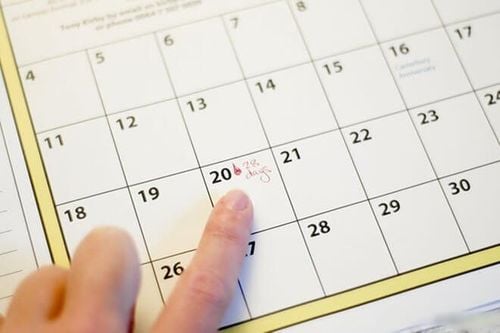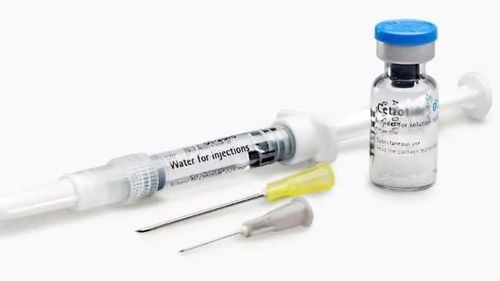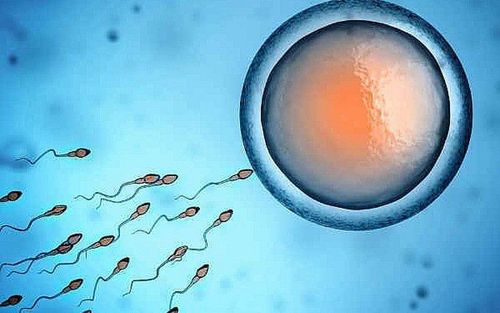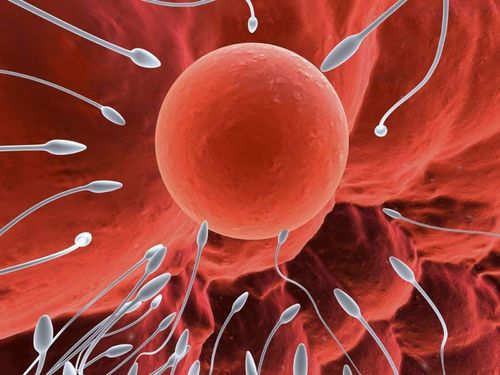This is an automatically translated article.
The article was professionally consulted with Specialist Doctor II Huynh Thi Hien - Department of Obstetrics and Gynecology - Vinmec Nha Trang International General Hospital.Ovulation in women follows a certain pattern based on the menstrual cycle. Understanding how to calculate ovulation as well as the signs of ovulation will help you be more proactive in planning your pregnancy.
1. How is the menstrual cycle calculated?
When a woman reaches puberty, menstruation is an important milestone that indicates that a woman has begun to become fertile. During the first 2-3 years of puberty, ovarian function has developed but has not really been completed, the menstrual cycle in women has not yet entered a regular cycle. After that, the ovaries gradually complete and menstruation will follow certain rules to form the menstrual cycle.Menstrual cycle is counted from the first day of menstruation until the first day of the next period. Some women have cycles lasting only 20 days, others up to 40 days or more, when cycles that repeat at a relatively steady rate are considered normal.
To accurately determine their menstrual cycle, women should observe at least 3-4 months and record the number of days that the cycle returns. The number of days of a cycle should be close to each other or not too much, or your period calculation will not be really accurate.
2. How to calculate ovulation according to the menstrual cycle
The menstrual cycle and the day of ovulation are closely related. To determine the exact day of ovulation, a woman's menstrual cycle must be regular and stable. The easiest way to estimate ovulation is by counting backwards. In theory, you'd first need to figure out exactly when to start your next period, based on the number of days that repeat cycles were previously tracked. After determining the date of your next period, you just need to count back 14 days, which is the day you will ovulate in this cycle. Understood as a simple rule, any woman, no matter how long the cycle lasts, 14 days after ovulating, will start the next menstrual period. From there, we apply the opposite calculation method.For example, if you have a 28-day cycle, the day you ovulate is day 14 (28-14=14); If you have a 32-day cycle, your ovulation will be on the 18th day (32-14=18), if you have a 20-day cycle, you will ovulate on day 6 (20-14=6).
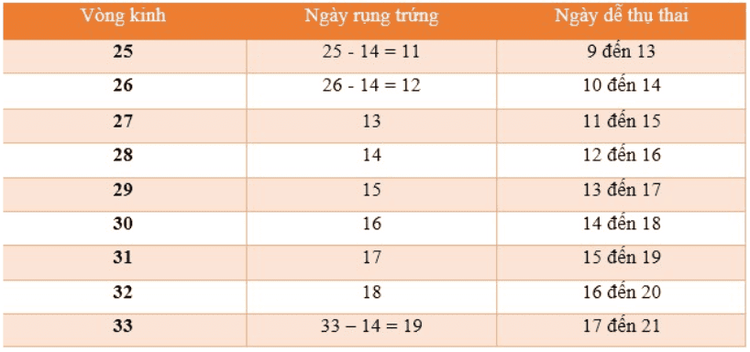
3. Ovulation signs
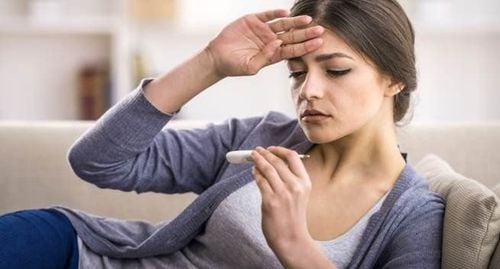
For women with irregular menstrual cycles, you can rely on other ovulation signs such as:
Increased body temperature
Use a thermometer to monitor body temperature every morning before going down bed, should measure at a certain hour and repeat, record in the monitoring table. When a woman ovulates, her body temperature suddenly rises from 0.3 - 0.5 degrees Celsius.
Using ovulation test strips
The principle of operation of this test strip is based on the change in LH hormone levels during the menstrual cycle. . When the amount of LH in a woman's urine reaches the highest concentration, the egg will be released after 12-24 hours, so it should be tested about 2 days before the day of suspected ovulation.
Follicle ultrasound
This is also one of the ways to recognize ovulation quite accurately. After 2-3 days, when you notice that cervical fluid is wet on your underwear, you can have an egg ultrasound for 3 consecutive days of suspicion to determine the most accurate.
Some other signs of ovulation
Cervix appears an oily and clear fluid, women feel like being closer to their husbands more than usual, breasts enlarge and feel tight. For most days of the month, a woman's vagina is usually light or sometimes a bit dry, but around the time of ovulation, there will be more mucus.
Please dial HOTLINE for more information or register for an appointment HERE. Download MyVinmec app to make appointments faster and to manage your bookings easily.





